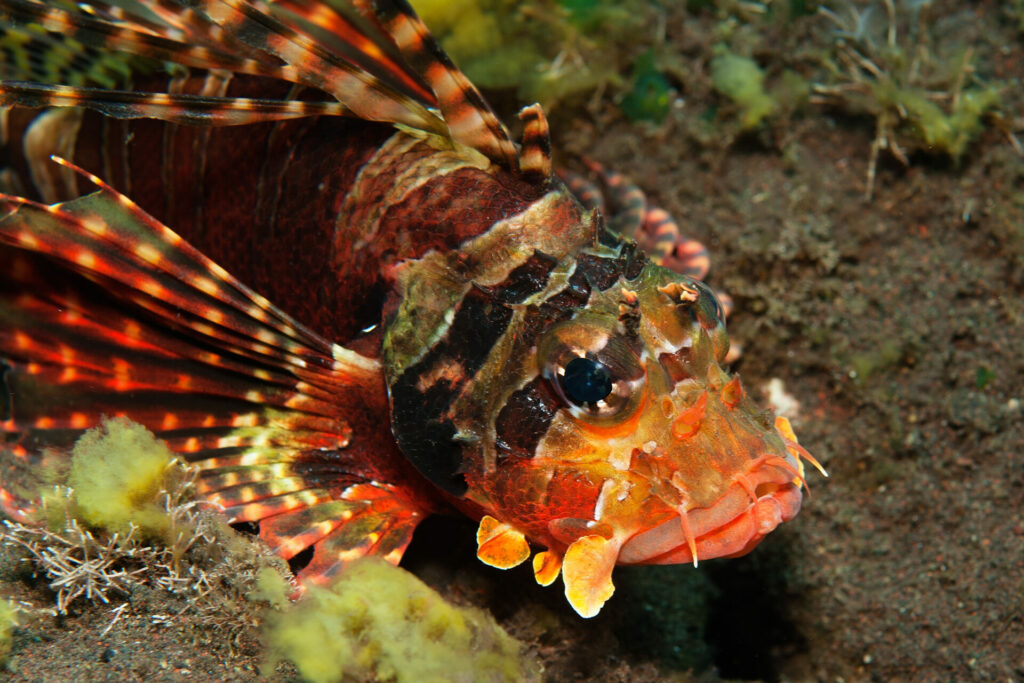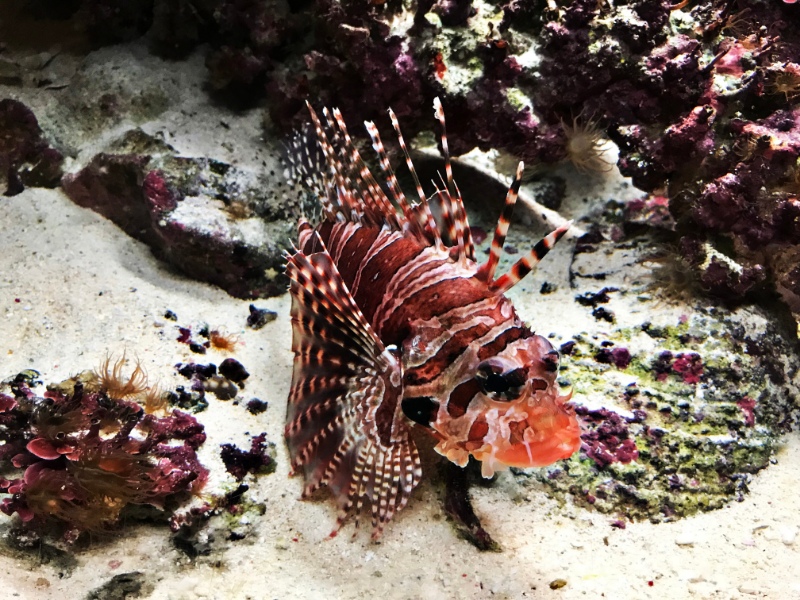Upon hearing the name “Zebra Turkey Fish,” one’s instinct is to search for visuals. This peculiarly named creature scores high on uniqueness, and although not gigantic, it adds a bright pop of color to your fish tank, making it an attractive choice.
What is a Zebra Turkey Fish?

The Zebra Turkey Fish boasts 13 prominent dorsal spines and mesmerizing colors, hinting at its beauty and the agility that keeps predators at bay. This marine marvel maintains a slow pace, reflecting a calm temperament often mistaken for docility.
Don’t be fooled, though – the sharpness and the venom stored within its spines could turn a harmless encounter into a painful experience! However, an encounter with these spines usually occurs by accident, given the fish wouldn’t voluntarily harm you unless threatened.
Aesthetics and Demeanor
The visual allure of the Zebra Turkey Fish is irrefutable. Looking at the fish closely reveals a pattern akin to a zebra, most conspicuous on the upper body near the head. The ‘Turkey’ in its name finds justifications in the large, spine-filled, multicolored fins and tail that remind us of a male turkey in full display.
What’s in the Family?
For those familiar with the Hawaiian lionfish, the Bricked fire-fish, the Shortspined butterfly cod, and the Double-Ocellated scorpionfish, get ready to make room for their cousin – the Zebra Turkey Fish. These vibrant, venomous fishes share the family trait of dwelling near the seabed in shallow waters and feeding on crustaceans and tinier fish life.
See Related: The Mystique of Coy Fish: A Symbol of Beauty and Prosperity
Making a Home for the Zebra Turkey Fish

Caring for a Zebra Turkey Fish can be a rewarding experience for saltwater aquarium enthusiasts. A few items to ensure a healthy, comfortable habitat for these species are:
- Low-light environment or a spacious hiding space
- Regular feeding of brine shrimp or small, cut-up shrimp two to three times a week
- An efficient filtration system to maintain a clean, illness-free environment
If you want to add a touch of peculiarity mixed with beauty to your aquarium, consider the Zebra Turkey Fish. These unique creatures, while not to be physically interacted with, can truly be the colorful centerpieces of your underwater world.
Related Resources